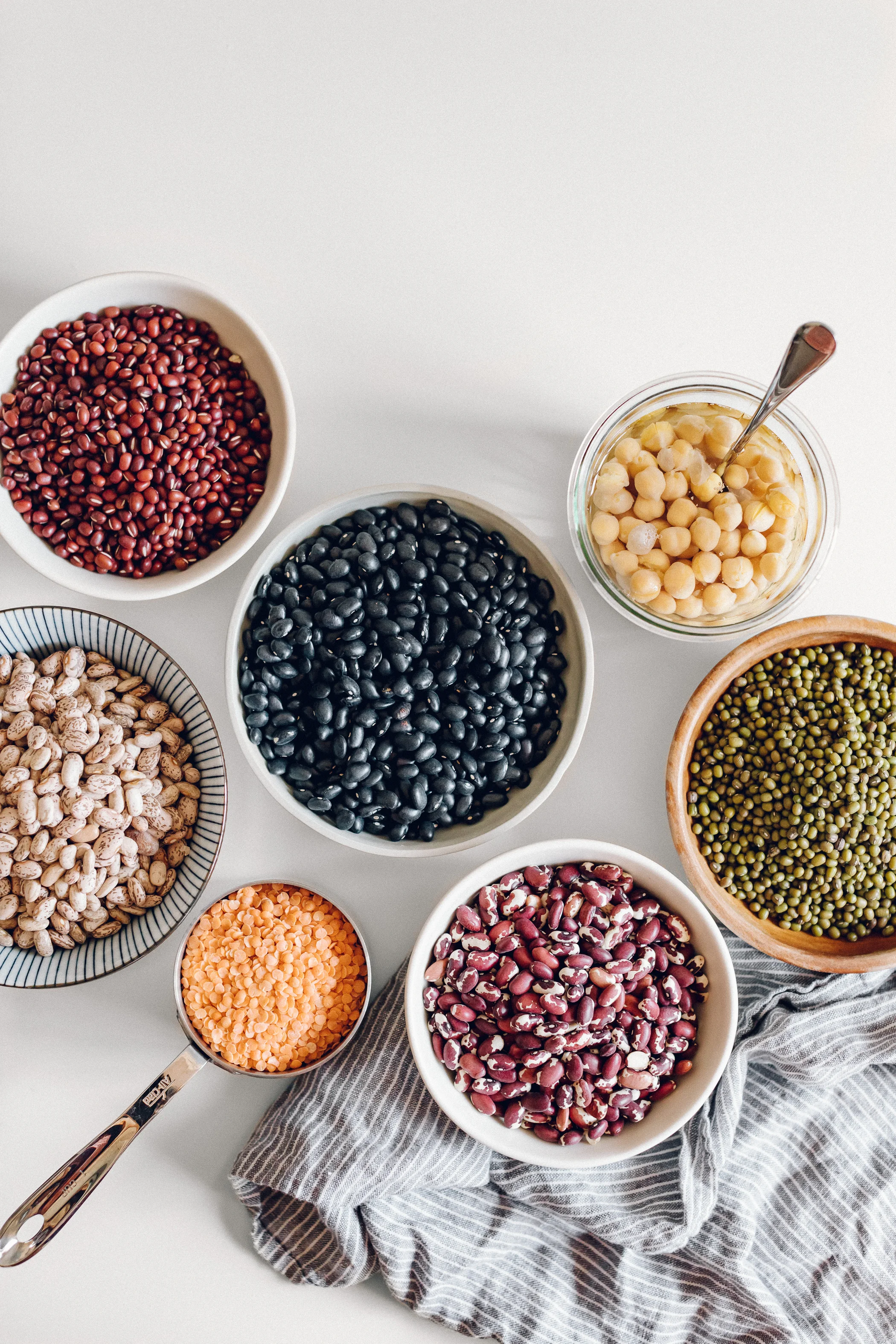How to Cook Beans
Creamy, delicious beans are one of my favorite foods. I learned a few years ago the difference between store bought and home cooked when I purchased my first pressure cooker. Cooking your own beans opens up the possibility of such a greater variety than the canned aisle can often provide! I love ordering bags of lentils, black beans, pintos, and navy beans from Flourist. I often pick up heirloom beans from our health food store, or order online from various sellers. Beans are also rich in minerals, specifically folate and iron - two very essential nutrients for all of us women (and men too). Just be sure to have a source of vitamin C on your plate to help you absorb all of their beautiful iron.
Below is the step by step method I follow for cooking my beans. It’s not unique to me, or anything really special outside of yielding really easily digested beans that are super creamy. My method uses a pressure cooker, the only way I’ve been able to properly cook beans so that they are soft. Plus I love how quickly they cook this way too. But of course, feel free to use a pot on your stove and simmer until soft if you prefer/need to. (I believe an Instant Pot or slow cooker can be used as well - a quick Google search can help you with instructions.)
I’m using a stovetop pressure cooker. Adjust the method below depending on the model of pressure cooker you are using.
MY PROCESS (photos below)
STEP 1 Purchase dried beans. Either in bulk from the store, or by a favorite brand online. Preferably organic.
STEP 2 Pour the desired amount of dried beans into a bowl – sized so they fill the container no more than halfway.
STEP 3 Add a splash of apple cider vinegar, and fill the entire bowl with filtered water. Let sit for 12 to 24 hours.
STEP 4 Rinse and drain the soaked beans. Place the beans in the pot of a pressure cooker.
STEP 5 Add a 1 inch piece of kombu seaweed, and cover the beans by 2 inches with filtered water.
STEP 6 Bring to a boil and scoop off any white foam that rises to the surface. Secure the lid, bring to high pressure, reduce stovetop heat to low, and let cook for 20 to 22 minutes (adjusting stovetop heat as needed to maintain high pressure).
STEP 7 Remove the pot from the stove and let the cooker fully release it’s pressure before removing the lid.
STEP 8 Toss the piece of kombu seaweed (compost), drain the beans, and transfer to heatproof glass containers. Cover with filtered water, seal tightly, and let cool on the counter before refrigerating.
FREEZING NOTE
If looking to freeze a portion of the beans, let them chill fully in the fridge before transferring to the freezer. Make sure to use freezer safe containers, these are my personal favorites. Leave an inch of space for expansion between the lid and the liquid/beans too.
EXCEPTION #1
I soak chickpeas in plain water, absent of apple cider vinegar, because it can cause the beans to harden. And I cook them for 30 minutes to get a really creamy, soft chickpea.
EXCEPTION #2
I don’t soak or pressure cook red lentils. Those I cook from dry in a small sauce pot following the packages directions. In a slow cooker they tend to fall to mush, this is fine for soups though!
FAQS
Why apple cider vinegar when soaking?
Soaking beans in an acidic solution helps to break down the phytic acid. While I do believe phytic acid is health promoting as well, I try to mediate the amount I’m exposed to by breaking it down a bit this way. It can also help with those having difficulty digesting the starch in beans at first, while working up your gut’s tolerance.
What’s with the kombu seaweed?
Kombu is rich in nutrients, like iodine, and helps break down some of the harder to digest starches in beans. A nice boost in flavor with added nutrients and digestibility, I’m a big fan.
How long do fresh beans last in the fridge?
Most sources online tell me five days, ours can last a week – but are usually gone before that time.
How long does it take a batch of beans to defrost from the freezer to the fridge?
It depends on the size of your freezing container, but ours typically take around 24 to 36 hours to totally defrost.
Why do you fill your containers of cooked beans with fresh water?
The addition of water gets rid of the air between the beans, which means they will last longer/spoil slower. It also helps the beans keep their shape, necessary for when freezing otherwise they tend to turn to mush.
Draining the beans after their soak.
Beans and kombu going into the pressure cooker.
Draining cooked beans.
Stored in a glass jar with fresh water.




